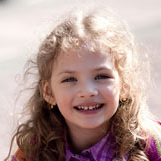by Lauren Schrotenboer, MA, CCC-SLP
You know that your child is difficult for you and/or others to understand, but you’re still not quite sure what the problem is. Perhaps your speech-language pathologist (SLP) gave your child a diagnosis and you’ve done your follow-up research; however, you continue to have questions and are unsure what the treatment process looks like. Let’s dig into each speech sound disorder to improve your understanding of childhood apraxia of speech, articulation disorders, and phonological disorders.
CAS is considered a motor programming or sequencing disorder. A child with CAS has difficulty with the consistency and precision of movements underlying speech without a neuromuscular deficit such as having abnormal facial tone or reflexes. Because they have difficulty with planning and programming movements needed for speech, they often exhibit inconsistent speech sound errors and irregular prosody.
The following are common characteristics of CAS:
An articulation disorder or delay is typically associated with structural and motor-based difficulties. For example, children with cleft palate or craniofacial anomalies may have difficulty producing certain sounds due to structural deficits. The sound errors are not necessarily patterned in nature, but result from difficulty and/or inability to sequence/produce certain consonants and vowels. An articulation disorder affects speech at a phonetic level.
The following are common characteristics of an articulation disorder:
A phonological disorder results from an impaired phonological representation of speech sounds in the brain. Children with phonological disorders typically display patterned errors when speaking that simplify adult speech. They may have difficulty understanding and perceiving the difference between speech sounds. Therapy targets building their awareness of phonemic rules through discriminating between different speech sounds and their placement in words. Treatment also focuses on breaking their mislearned patterns of spoken language by learning correct sound productions.
The following are common characteristics of an articulation disorder:
Never hesitate to ask your speech-language pathologist for more information about these speech sound disorders. Asking questions will build your understanding and help your child succeed!

My husband and I are grateful to Cobblestone for everything they have done for our daughter Scarlett. We have had the pleasure of working with Lynn and it has been a life changing experience for our whole family. Scarlett has gained so much confidence in her abilities and we feel fortunate to have had this opportunity to work with them on her speech goals. We know that with their tools she will have a different level of learning than that of her peers. In addition, Jodie has been a delight to work with from getting us started to answering any questions we have in a timely manner. They treat you like part of the family and they truly care about your child.
Alana Kelly – 8 year-old daughter
We moved here last year and found Cobblestone to continue my then 4 year olds Apraxia therapy with Miss Samantha. Last week he had his last session. It’s been a wonderful year working with Samantha and Lynn and we are going to miss them so much. Samantha was a great therapist and worked so well with my son. Lynn is such a wonderful, kind, and caring woman and I truely enjoyed our afternoon chats. She runs her business so professionally, yet when you walk in the door, you feel like family. We had some issues with our insurance company and she worked so hard to get things fixed so that we didn’t have to deal with them ourselves.
Stacy Cote – 4 year-old son
We love Cobblestone! We have worked with several therapists over the past 3 years at Cobblestone. Each one has been easy to work with and adaptable to my sons needs. Due to Covid restrictions, we are seeing Kimberly remotely every week. I wasn't sure if remote therapy would be a great fit for my son, but she has made the transition extremely easy and engaging. He continues to work on and gain skills with every session. Kimberly is able to hold his attention for most of the session. Way to adapt Cobblestone! Thank you.
Jenn Grey –5 year-old son
First visit: Your first visit is an opportunity for the therapist, child and yourself to meet prior to an evaluation or intervention. You are welcome to bring siblings and other family members to this visit. The therapist will take this opportunity to informally observe your child's communication and play skills ... Learn more »
First visit: You will be coming to visit me soon at my office. When you arrive I will greet you and we will have some time to play and get to know each other. I will show you where the games and toys are and you will be able to pick out a couple that we can play with together ... Learn more »
7761 Shaffer Pkwy
Ste 140
Littleton, Colorado 80127
Phone: 303-952-9038
Fax: 720-622-9901